Some of the world’s largest dogs are on this page. This is mainly because I was interested in seeing the world’s largest dogs and finding out more about them, so I researched them and found as many of them as I could. If you’re looking for a list of large dogs, this is the right place.
What kind of dog is the largest in the world? In addition to English Mastiffs, there are several large dogs that will occupy the whole couch while protecting their owners. Some breeds of giant dogs are short and stocky, while others are tall and slender owing to their bone structure.
Big dog breeds, whether you’re seeking a new pet or just inquisitive, will make you fall in love.
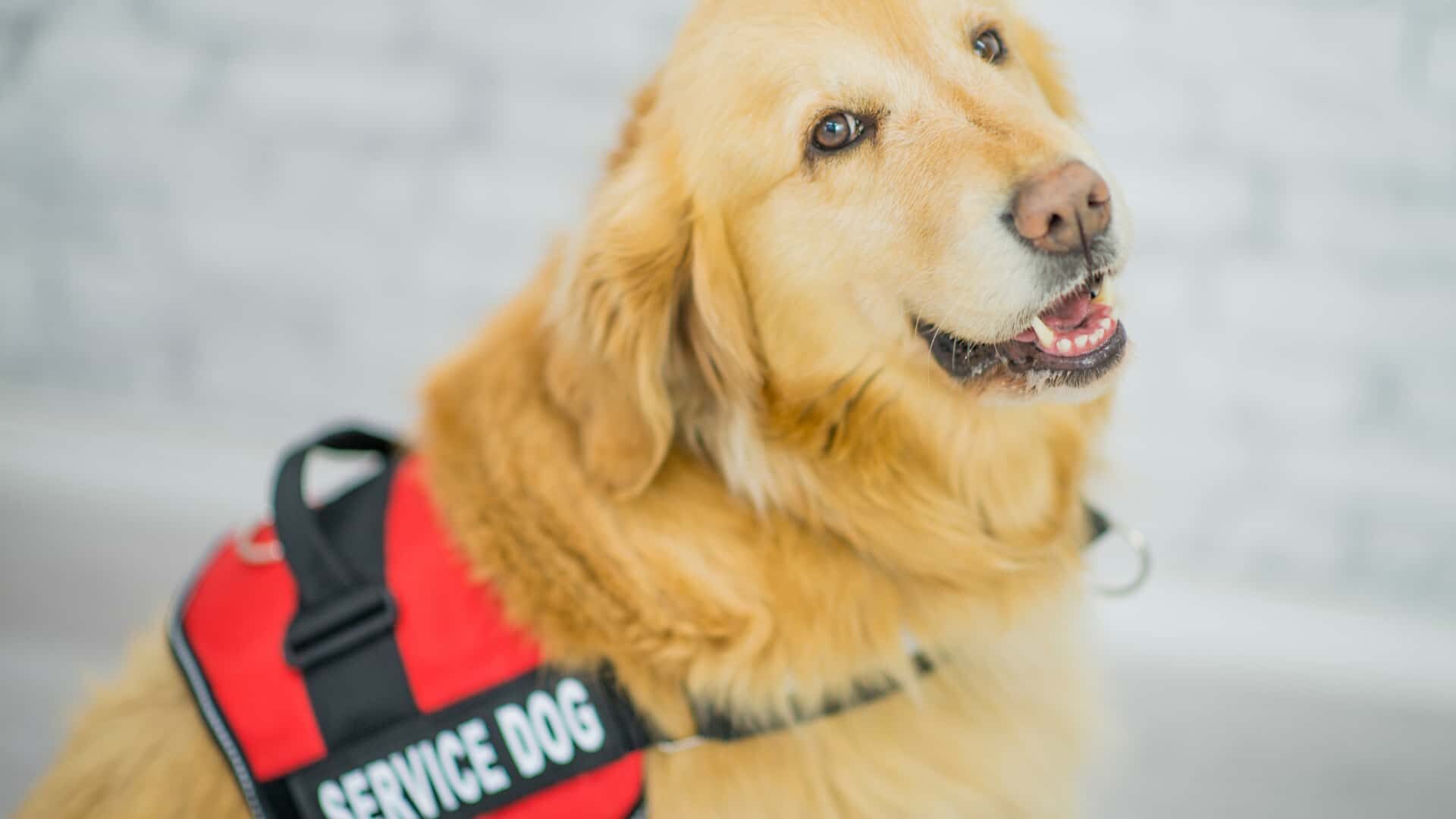
Is it okay to own a large dog if you have kids in house?
Is it okay to own a large dog if you have kids in house? Dogs are a part of the family these days. Because of this more families than ever before are bringing dogs into their homes. Instead of dogs being just a pet, they’re going to be part of the family and help out around the house.
What are the things you have to look for when you getting a large dog to house?
1. Maturation
When it comes to mental and physical maturation, huge canines take a very long time to grow up. Giant dogs’ joints are particularly prone to injury while they are young. Thus exercising them should be approached with extreme caution.
2. Space
A dog’s size has a direct correlation to the size of its accessories, which includes everything from its toys and food bowls to its bed. Despite the fact that some large dogs are satisfied with living in tiny areas, you still need to have adequate room for their need.
Keep in mind that not everyone or every place is a good fit for a large dog. Giant breeds often surpass the weight restrictions placed on dogs by many flats and hotels. Finding a dog walker or sitter that is both experienced and certified might be even more difficult.
3. Cost
The cost of caring for a large dog might be prohibitive. When the dog grows, so does the expense. Make sure that you can afford to care for a dog of this size before bringing one into your home.
Large-breed dog food, toys, and other supplies are often more costly than those for smaller dogs. Medication for large dogs will be more costly as a result. If you’re looking for a vet who can do X-rays, surgery, or other procedures on a large dog, you may have to shop around or go to a facility that specializes in large breeds.
4. Training
All dogs, no matter their size, need training, but huge breeds require it much more. Dogs that people find “cute” when they perform things like leaping up, counter-surfing, and tugging aren’t so charming when the dog is a behemoth.
Because enormous canines may grow to be as large as some humans, it’s critical to begin teaching them at an early age. It’s important to make training sessions enjoyable and upbeat at all times. S.T.A.R. Puppy Program is a great starting point if you’re thinking of bringing a giant into your life.
One of these breeds may be a good match for your family if you’re alright with all of these possible issues and still believe that larger dogs are better.
How hard is it to train large dogs?
When it comes to training, large dogs get a bad rap for being more difficult to control and more dangerous. Because of their size, dogs may inflict more serious harm if they’re assaulted.
With sufficient training, any breed may be calm and submissive. When training huge dogs, there are a number of challenges that must be addressed.
1. Teach them to avoid leaping off of things
It is common for dogs to leap up and lay their front paws on a stranger when they see them for the first time. Despite the fact that this “cute” and “harmless” habit is common in little dogs, it is a major concern in bigger dogs. An adult person may be knocked down by a 120-pound Rottweiler or a 250-pound St.
Bernard if they leap, and a tiny kid might be seriously injured. Large dogs must be taught an alternate behavior since their excitement is difficult to manage. Encourage the dog to extend his paw for a handshake rather than leaping.
Help them understand how they would behave if presented with an option that is more manageable for them to deal with in the presence of strangers. Your pet should not be allowed to meet strangers until these habits are firmly established in them by a dog bite attorney.
2. Use leashes with predetermined lengths
As a result of its reduced tugging and more mobility, retractable leashes have become a popular choice for dog owners. Large dogs, on the other hand, should be walked with a leash that is no more than one foot in length.
For an untrained or uncontrollable German Shepherd, the retractable leash will give him the impression that he has greater freedom to go, which might be dangerous. Keeping the dog on a shorter leash will teach him how to walk safely and keep him out of harm’s way.
3. From the get-go, show your love
The less aggressive a dog is, the better he is cared for. Even large dogs may benefit from this advice. Dogs that have been properly socialized from the time they were puppies are often more secure than those who have been mistreated or have had little contact with people.
Aggressive behavior in large-breed pups like Great Danes and Boxers may be reduced by ensuring they get plenty of positive attention from individuals of all ages when they are young. Owners should be there throughout stressful situations such as veterinary appointments, automobile journeys, and thunderstorms in order to build trust between the dog and its owner.
Large breed dogs may be wonderful companions, but their size and strength need extensive training to prevent harmful encounters. Proper training of all dogs, particularly big breeds, is the greatest method to avoid accidents and injuries.
How much space does a large dog needs in your house?
Pets, like people, are entitled to and need their own personal space. Dogs and cats, like their human counterparts, are prone to sleepiness, restlessness, and transgression of boundaries.
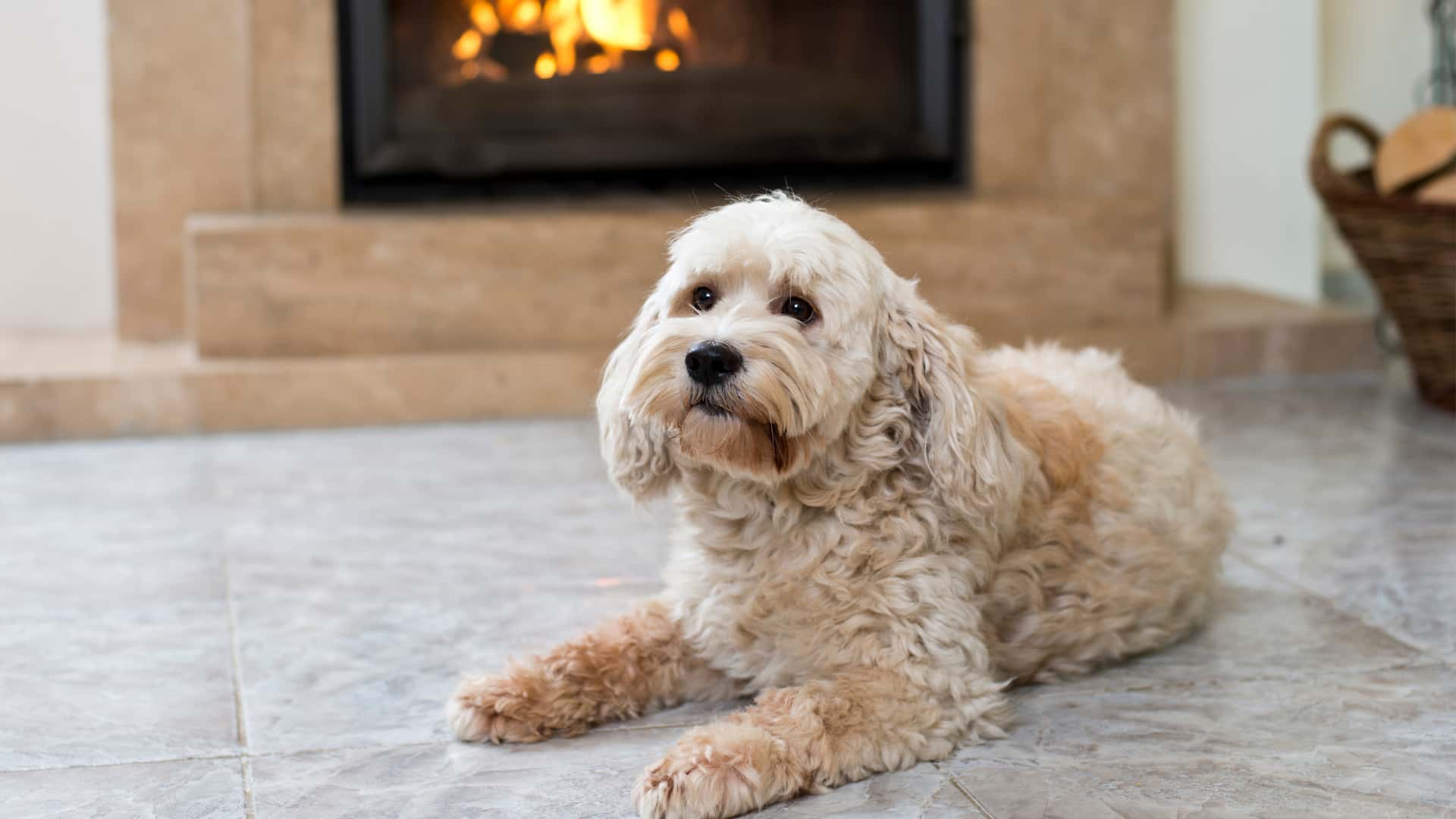
In order for individuals to express their emotions, there must be a safe environment. Owners should provide their pets with a specific area instead of letting their pets take out their hostility on other people or animals.
If you have a large pet, you will need to make sure that it has a large enough area to roam about in. There is no such thing as a bad spot for a pet, no matter how little or large the territory is.
Animal Welfare Act mandates that pets have ample room to turn around, lay down, sit and stand up comfortably. Follow these measures to make sure your pet has enough room:
- Measure from the tip of their snout to the base of their tail in a straight line.
- Step one’s measurement has been increased by six inches.
- For example, 34 times 34 is the minimum quantity of floor area in square inches that is needed for a room to function.
- The bare minimum quantity of floor space needed is calculated by multiplying the number from step three by 144.
- The original value for this case would be 28. When you add six to 28, the result is 34. 1,156 square inches is the result of multiplying 34 by itself. The answer is 8.028 square feet if you divide 1,156 by 144.
In addition, dogs should have 6 inches of space over their heads if they are in a crate or a low room. As a result, they’ll be more at ease.
What criteria do you use to determine where your pet belongs?
They could be the most at ease in a certain area of the home if you’ve seen them there often resting. Make sure you keep to the location you’ve chosen. It may be difficult for pets to adapt to different areas of the home on a regular basis.
Here are a few pointers to keep in mind while making your final decision on a location:
To begin, choose a location that isn’t carpeted and begin. It’s simpler to clean up these areas if your pet has a food or drink accident, sheds often, or is unwell.
Look for a place where you won’t be disturbed. If your pet wants some alone time, they shouldn’t be disturbed, particularly by people who aren’t related to them.
Ensure that the temperature remains constant. Make sure your pet isn’t too hot or chilly, particularly if they’re home alone during the day.
In unusually warm or cold weather, keep the temperature as near to its normal range as possible.
Avoid being exposed to the sun’s rays. Because of the brightness, your pet may be uncomfortable and unable to get a good night’s sleep.
Some animals want to be in a position where they may retreat inside a walled-in region. If your pet likes to curl up, locate a nook or a wall to do it in.
As soon as you’ve decided on a place, it’s time to be creative.
Add some of their favorite items, such as a comfortable blanket, a dog bed, and any toys that they like. In addition, make sure your pet has access to a water bowl and a food bowl within easy reach of where they sleep.
Do not move their toys or bedding at this time.
Blocking off the area from visitors and children may help demonstrate to your pet that this is their exclusive place. Prevent frequent visits to your pet’s area to avoid making them feel uncomfortable. When your pet wants to spend time with the rest of the family or other pets, encourage them to come into other areas of the home, but don’t attempt to get them out of their location if they’re already there.
It’s important to remember that your duty as a pet owner isn’t done until your pet is happy and secure in its own environment.
Top 20 largest dogs in the world
Every aspect of a dog’s appearance and personality may be found in one of the many different breeds. Man’s best friend may be as little as a teacup or as large as a small horse, depending on how big you want it to be. Dogs have been bred for certain human needs since the dawn of time.
Some are for hunting, while others are for herding cattle, companions, or champions who will steal the show in competition. Here is a list of the 20 biggest dog breeds in the world for those looking for a bigger companion. Based on their height and weight, we’ve added them to the list.
1. Great Dane
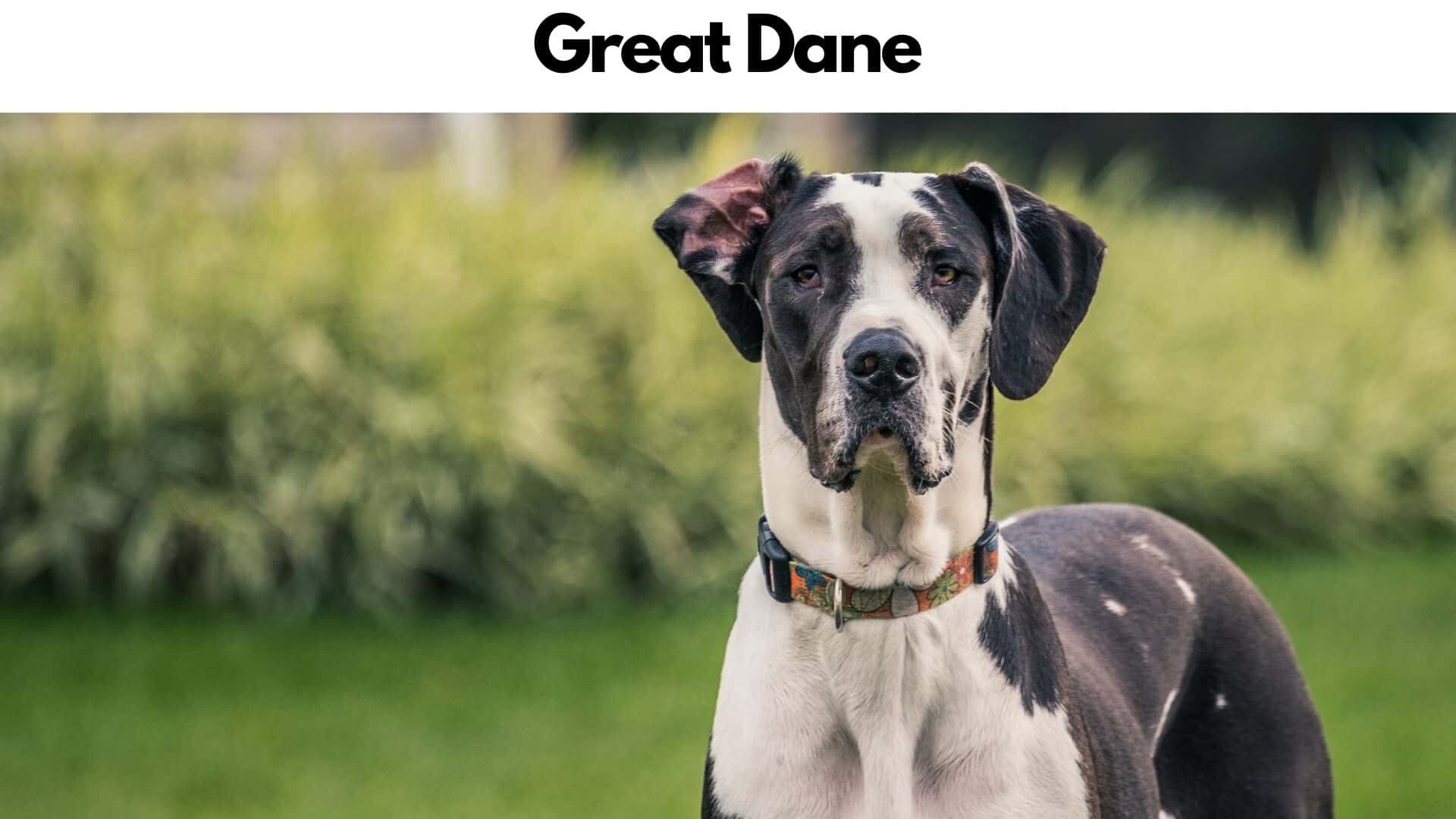
Great Danes reach a mature size of 28 to 30 inches in height on average. Zeus, a Great Dane that was 44 inches tall, held the record for the tallest reported Great Dane. Germans bred Great Danes in the 1800s. Irish wolfhounds and English mastiffs are a crossbreed.
When fully grown, the typical weight of a giraffe is 100 to 120 pounds. Even if they aren’t the heaviest, they are the tallest. These canines are known for their patience, friendliness, and dependability. They have a muscular body that is both strong and slender.
2. English Mastiff
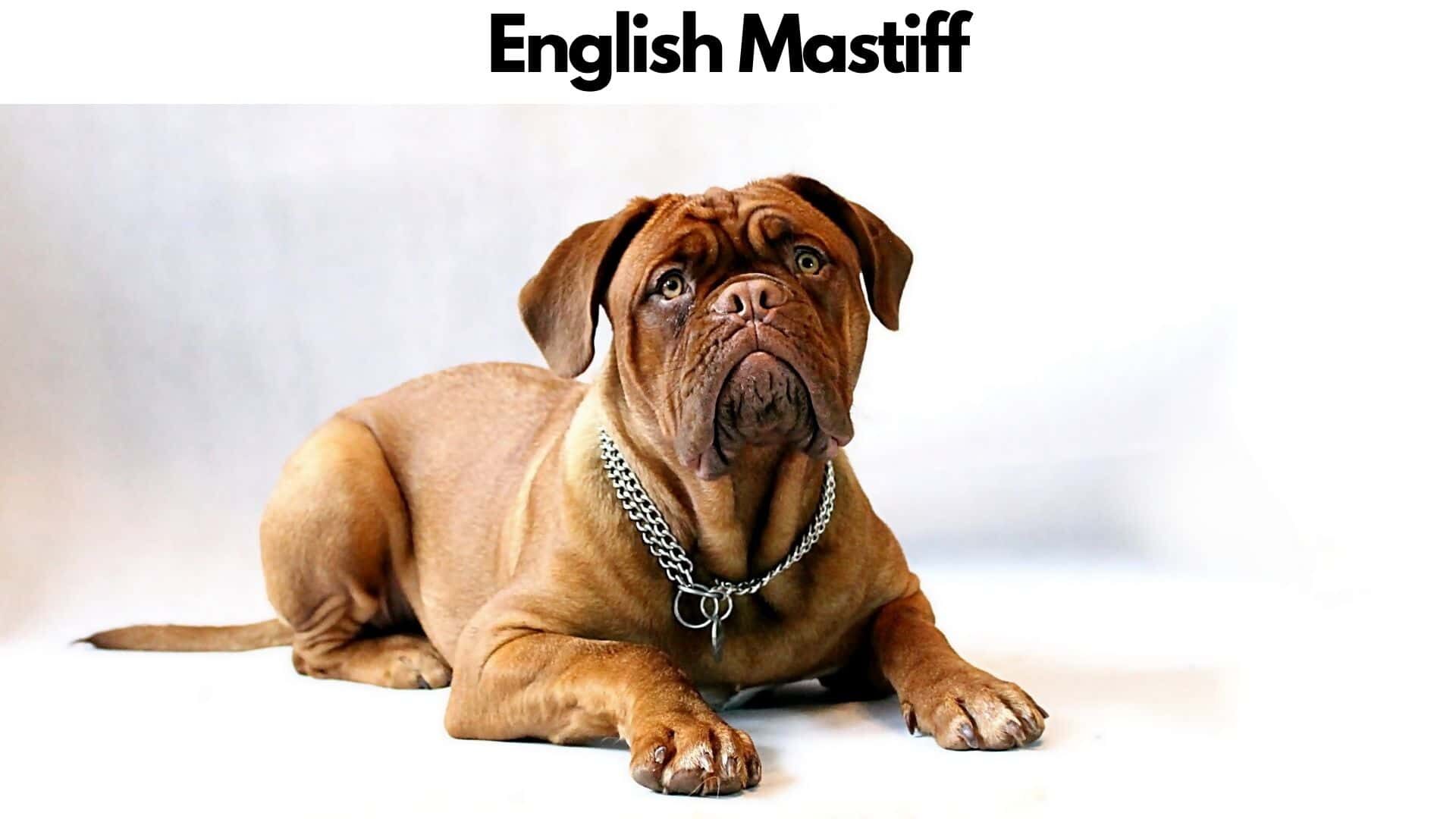
An English Mastiff may grow up to 30 inches in height on average. For hunting and as warriors, this type of dog is said to have originated in Asia. When completely mature, an English mastiff may weigh up to 250 pounds. The record English mastiff Aicama Zorba weighed 343 pounds.
They have a calm, steady demeanor, making them great family pets and excellent protectors. You have to take your time with them, but once you do, they will be fiercely loyal and droolers for life.
Mastiffs of the English breed may grow to the size of a pony. A stocky build, well-developed muscle, and stocky height characterize their appearance. Apricot, brindle, and fawn are all available. Mastiffs from Naples, Italy
3. Neapolitan mastiff
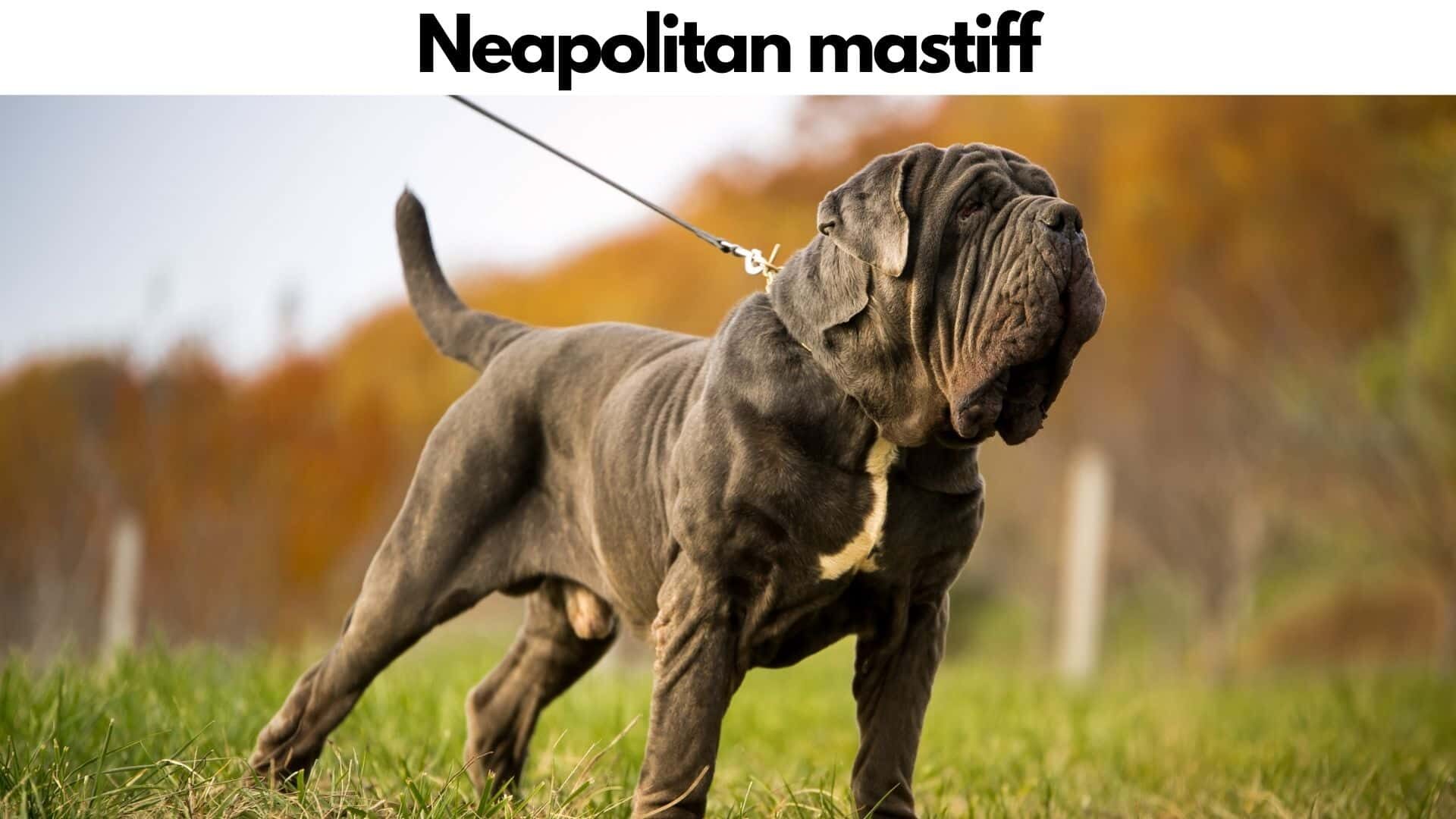
Generally speaking, the height of this breed ranges from 26 to 31 inches. The Neopolitan Mastiff is one of the most massive canines there is. Southern Italy is where the Neapolitan mastiff had its start.
The typical male mastiff is between 26 and 31 inches tall and weighs between 130 and 155 pounds when used as a guard dog. Typically, females are smaller and weigh between 110 and 130 pounds less than their male counterparts. The Roman Army used the breed as a fighting dog.
4. Bull Mastiff
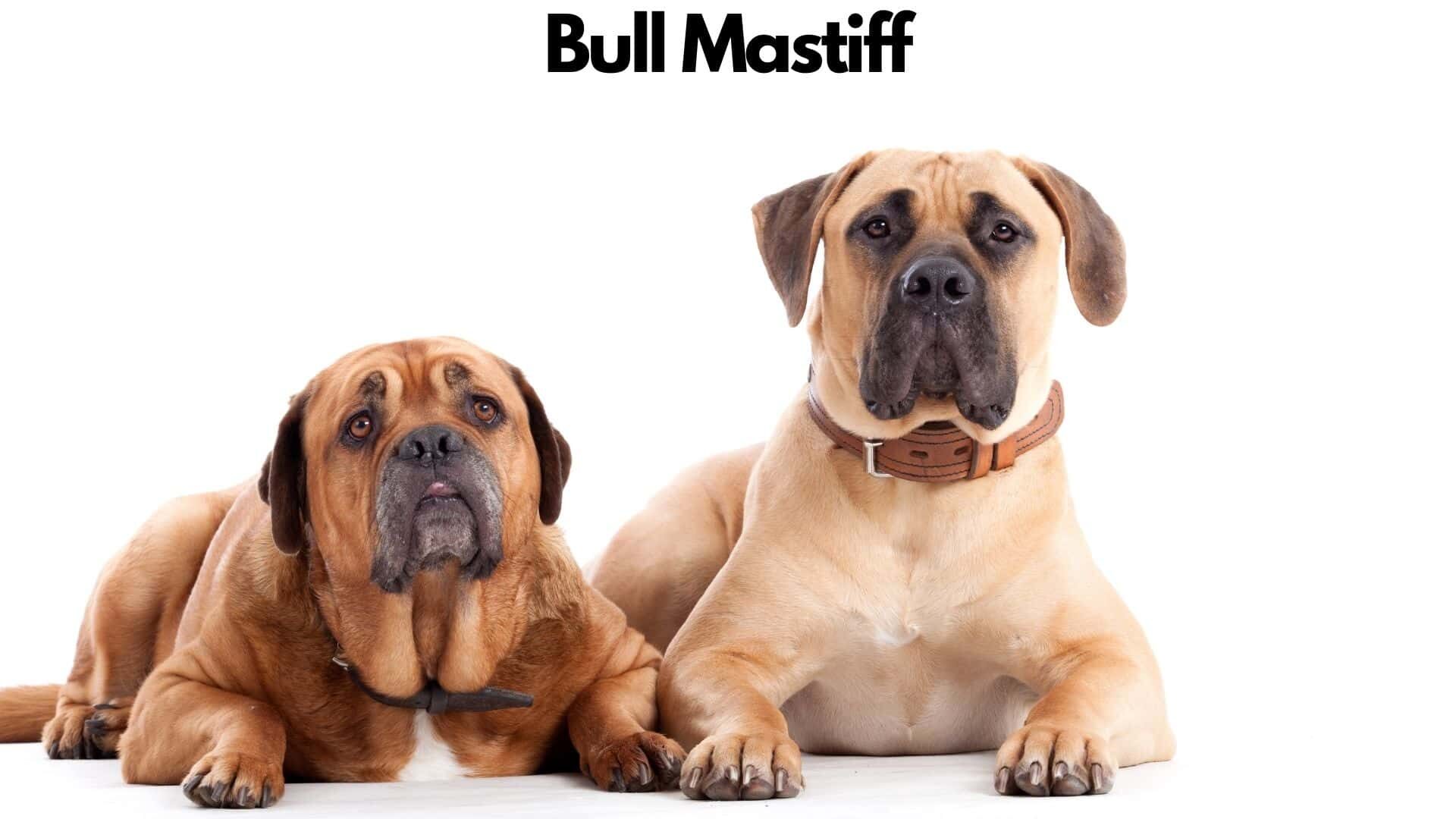
Male bull mastiffs develop to a height of 25-27 inches, while females grow to a height of 24 to 26 inches at maturity. In 1860, bullmastiffs became a recognized breed. As an anti-poaching and intruder deterrent, they were first developed in England. Males typically weigh between 110 and 130 pounds on average. Feminine weight ranges from 100 to 120 pounds;
Intuitive and eager to please, the Bullmastiff is an excellent family pet. Despite their size, they are nimble and quick. They are obedient and easy to get along with. A robust frame and well-defined symmetrical muscles are seen in these canines. They’re a mix of 660 Mastiff and 40 Bulldog percent. Red, red brindle, fawn brindle, and red fawn and brindle are all available.
5. Newfoundland
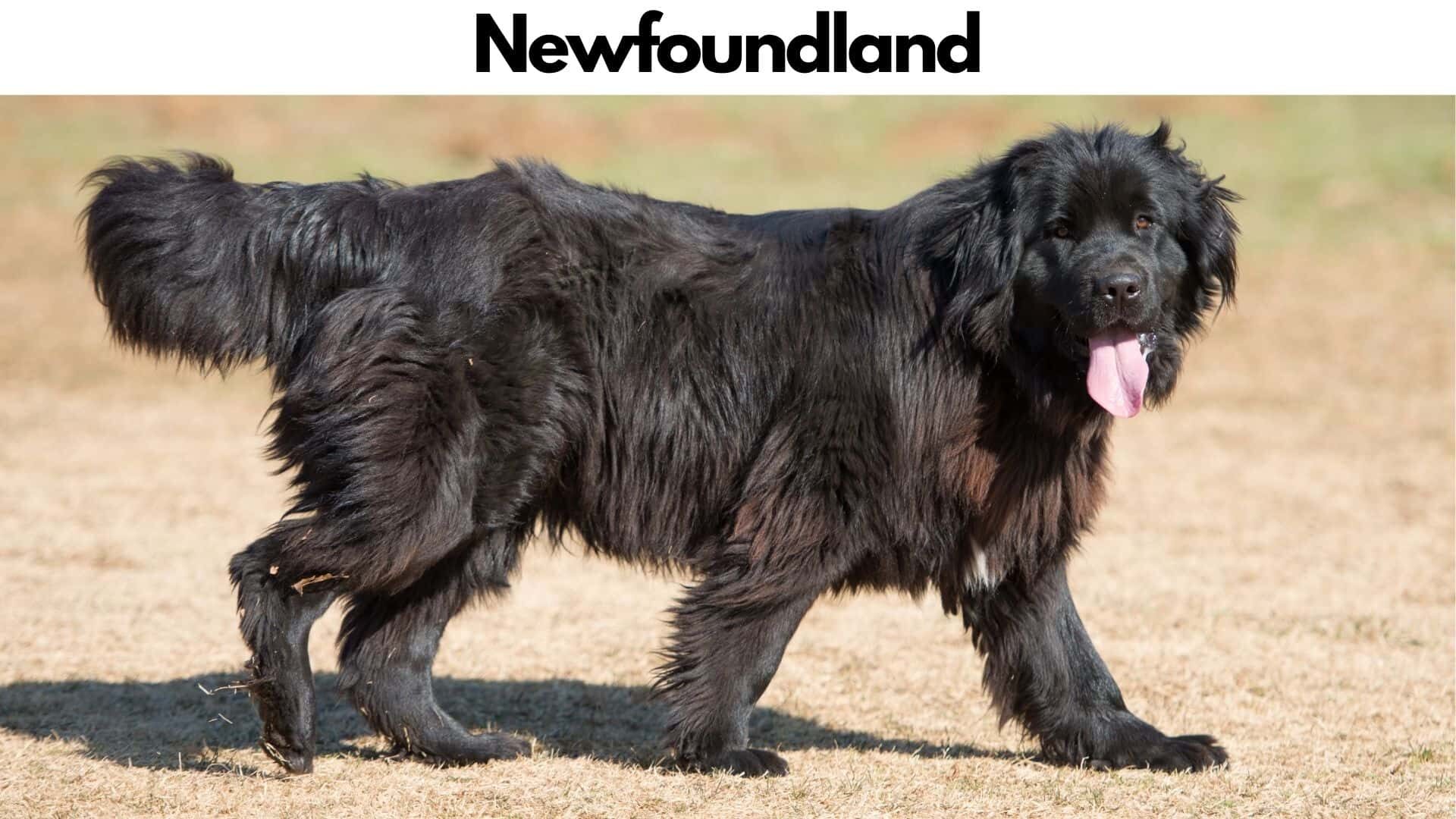
As a rule, the height of a Newfoundland dog is between 27 and 30 inches. These creatures are protected from freezing temperatures by their thick double coats., they seem considerably larger than they really are.
Newfoundlands are said to be descended from the Great Pyrenees and husky hybrid, with a sprinkling of French hound thrown in for good measure. They were probably raised by Basque fishermen on the Newfoundland coast to help draw fish carts from the beach to the markets.
A typical mature Newfoundland weighs about 150 pounds. Good temperament and intelligence are hallmarks of Newfoundland’s character. They’re devoted and loyal friends, and I’d recommend them to everyone.
These canines were bred to work and thrive in an active environment. Their obedience and loyalty, as well as their gentle disposition and swimming prowess, make them excellent companions.
6. Dogue de Bordeaux AKA French Mastiff
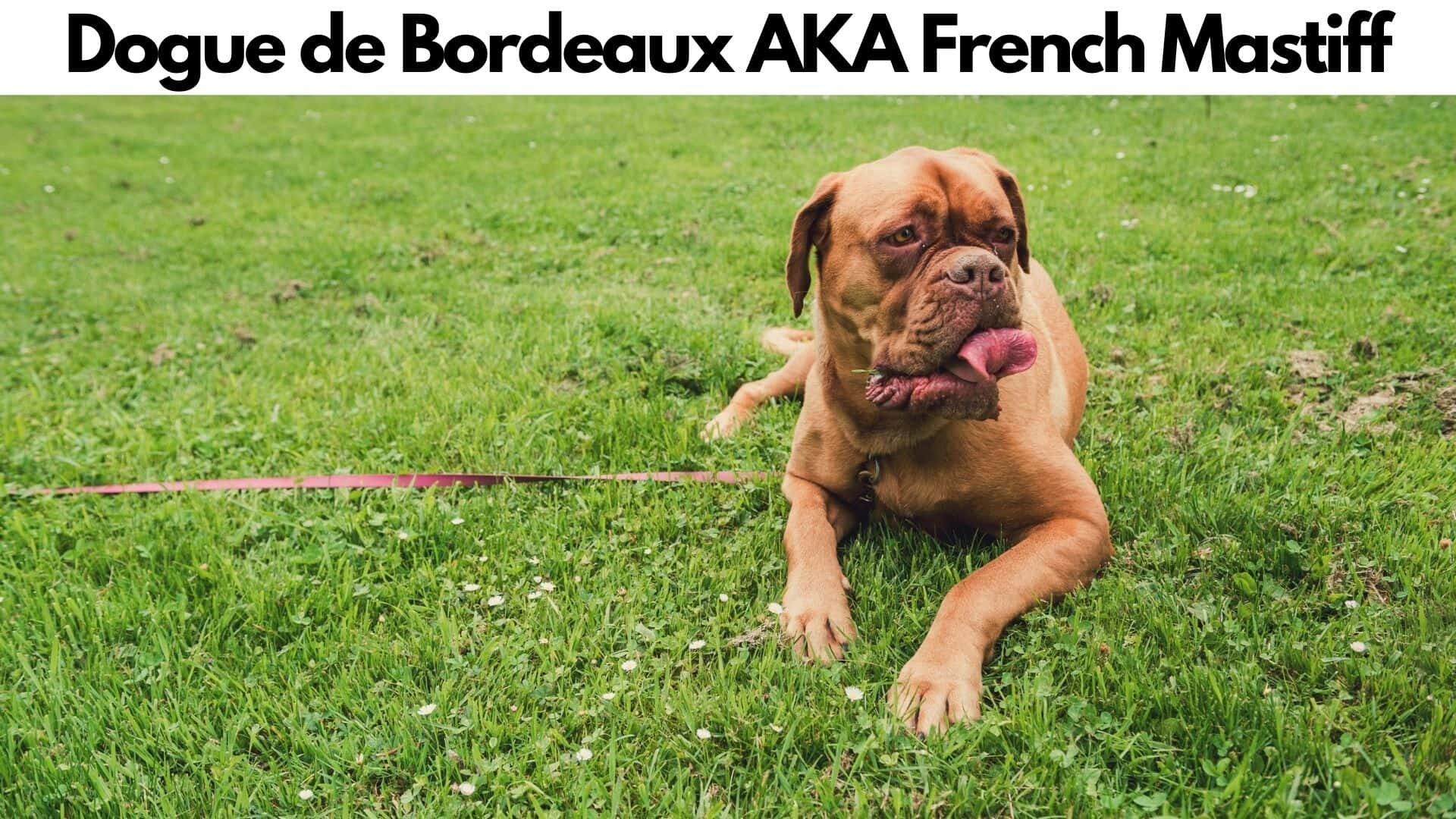
When fully grown, this breed stands between 23 and 27 inches tall. As a descendant of the Greco-Roman Molossoids, who were raised as war dogs, the Dogue de Bordeaux is said to have descended from the Tibetan Mastiff. In ancient France, the breed was first developed.
Between 125 and 150 pounds is the typical body weight. This dog’s natural tendency is to serve as a watchdog. Dogs of this breed are devoted to their families, although they are not violent. The dog that starred with Tom Hanks in the movie “Turner and Hooch” was the catalyst for the breed’s rise in popularity.’
The Bordeaux mastiff, French mastiff, and Bordeauxdog are all slang terms for this breed. It has a blocky look and is a muscular dog. This powerful powerhouse has a sluggish strut about it. These are the primary colors: red, fawn, and mahogany.
7. Cane Corso
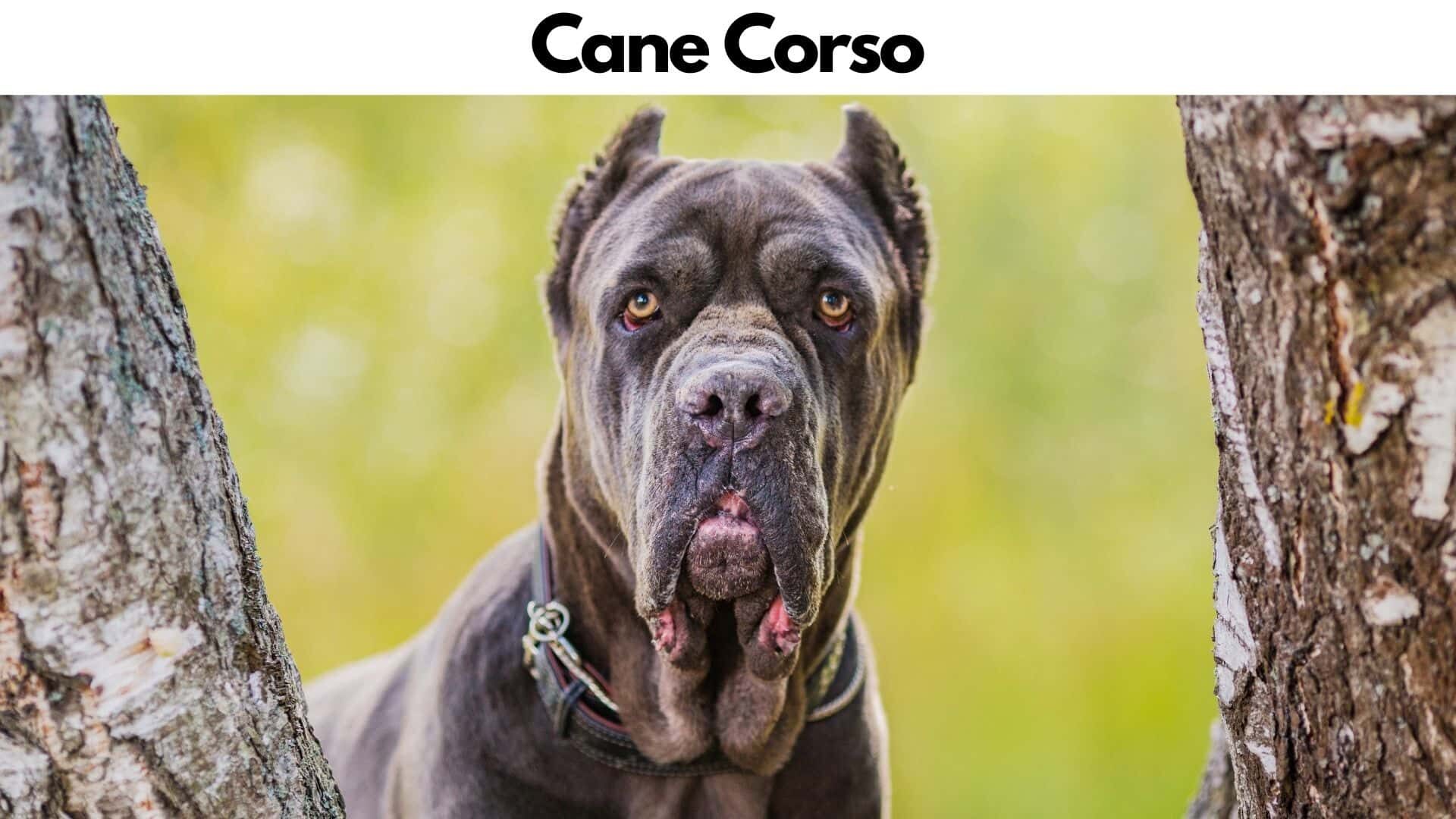
When fully grown, the Cane Corso has a shoulder height of 28 inches. In 2010, this breed was officially recognized by the American Kennel Club. The breed has been regarded very uncommon up to this point. The breed’s primary purpose is to serve as a security dog. Cane Corso adults often weigh between 90 and 100 pounds.
Dogs are known for their loyalty and protectiveness, and this one has all of those qualities and more. This guard dog has a majestic bearing and an air of self-assurance about him. They have a robust and chiseled physique.
The huge head, which is larger than other dogs, is the most menacing deterrent. Red and fawn, as well as various shades of black and black brindle, may be seen with black.
8. Great Pyrenees
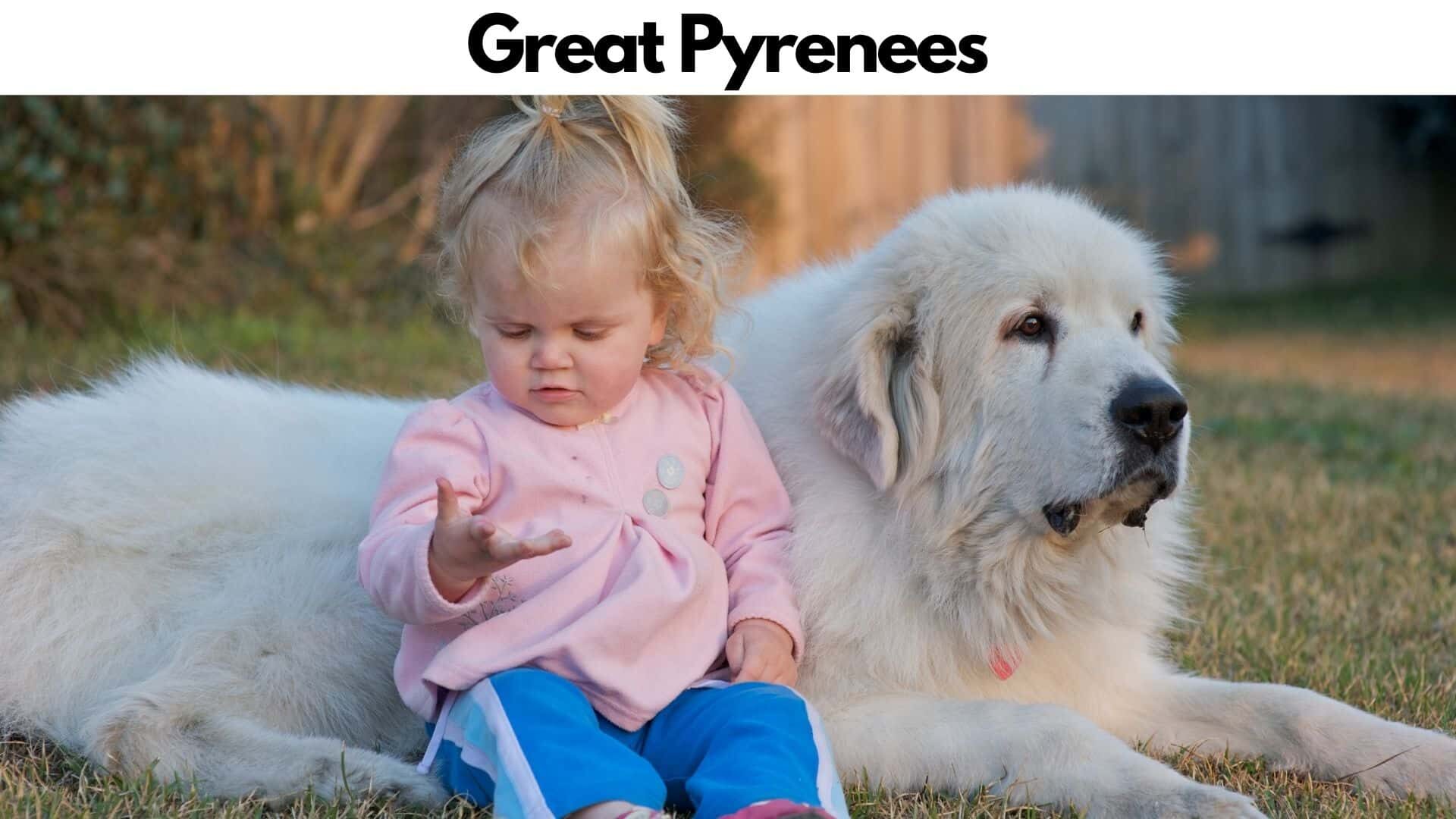
The typical height of this breed is 32 inches at the shoulders. It is estimated that this breed was developed in Europe between 1800 and 1000 BC.. As part of the vast migration, the Stone Age breed was transported to Europe from Central Asia or Siberia. For an adult dog, the weight ranges from 100 to 120 pounds.
The Great Pyrenees are known for their dominance, thus early training must prevent the use of teeth on human beings. Their calm and firm demeanors allow them to react rapidly to any danger they sense. People describe these people as strong-willed and clever.
9. Bernese Mountain Dog
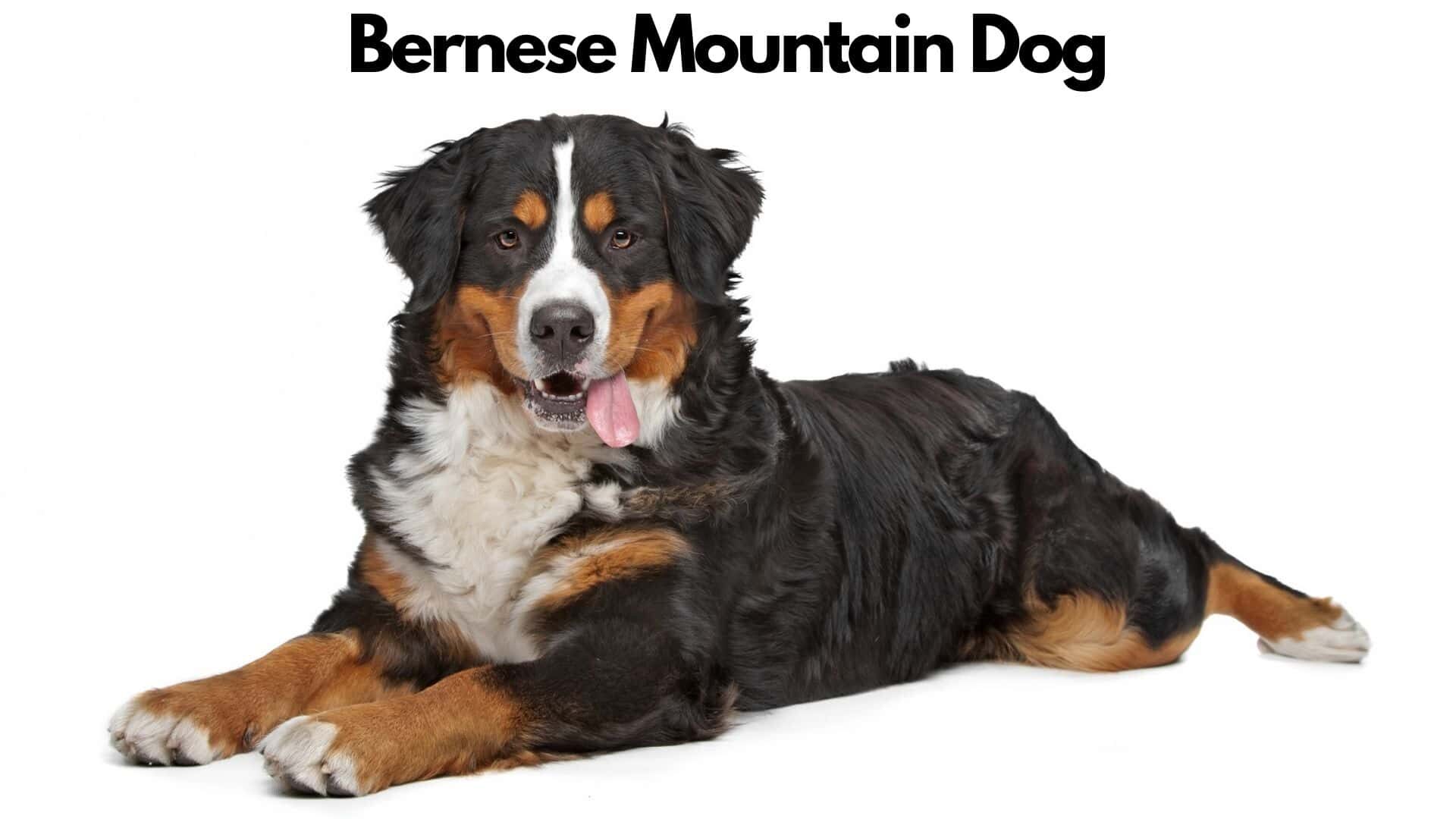
Adult males often stand 25 to 28 inches tall. The average height of a female is between 23 and 26 inches. The ancient ancestry of the Bernese Mountain Dog may be traced back to the Swiss midlands, where the breed was initially developed. It lives on the farm with us as a companion dog.
The average weight of an adult guy is between 86 and 100 pounds. Between 79 to 110 pounds, females are typical weight. This breed has a tendency to form stronger bonds with a single owner. They’re well-educated, love participating in sports, and enjoy spending time with other people. They make great pets for families.
They’re quick to learn new things since they’re so adaptable. Aristocratic in appearance, some Great Pyrenees have long, silky coats. It is a hardy breed that survives despite the cold weather. They have a strong, athletic frame with well-defined muscles. This species has both males and females. Examples include black and white, black tan and white, black with rust, black-and-white, and black-and-rust-white.
10. Tibetan Mastiff
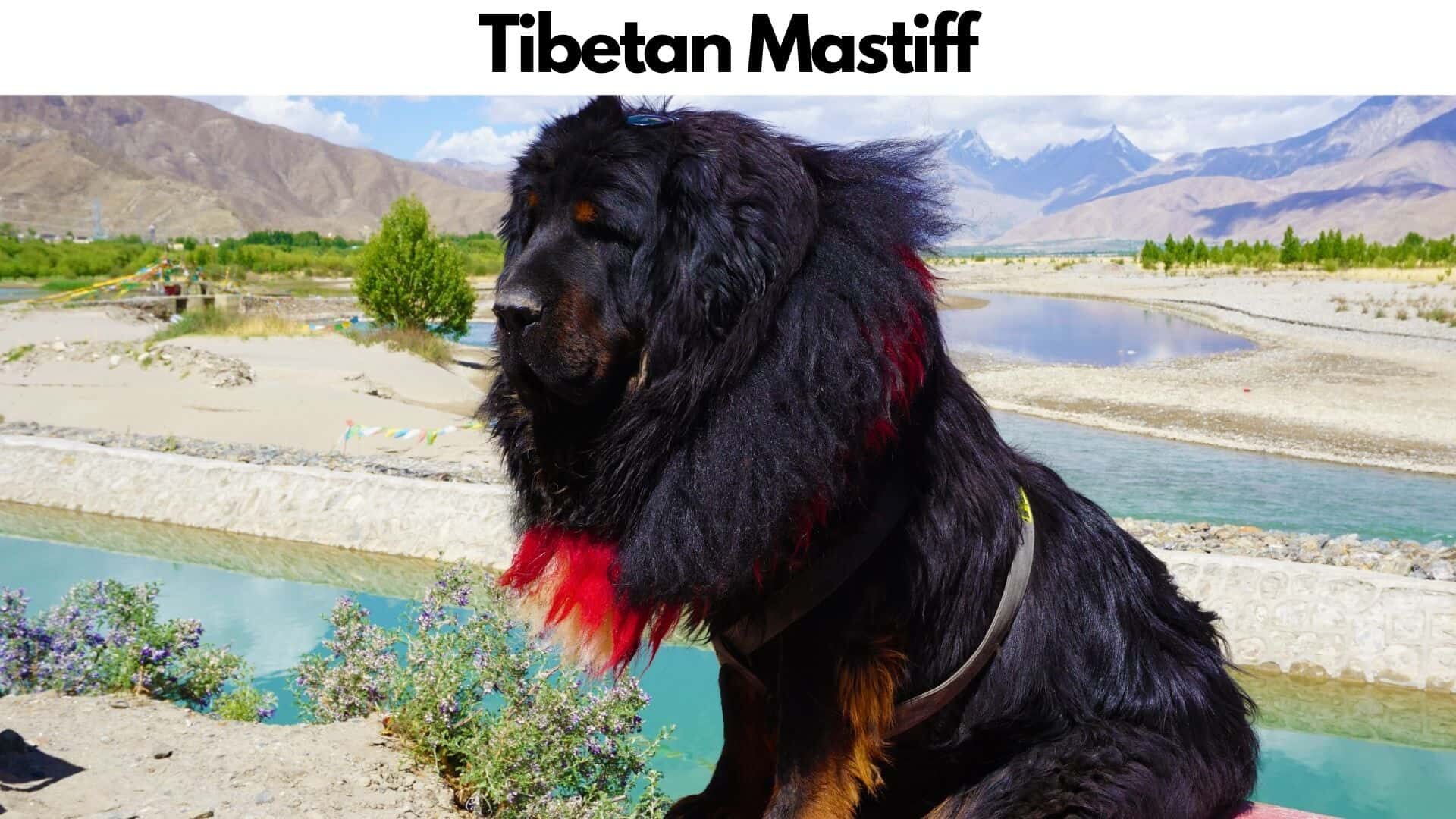
The typical height of a male is between 26 and 30 inches. When completely mature, females are between 24 and 28 inches tall. As a huge guard dog, the Tibetan mastiff was originally developed in Tibet.
The earliest of this kind is said to have originated in the Himalayas and the plains of Central Asia. Women weigh 75 to 120 pounds, but adult males weigh 100 to 160 pounds. They have a high level of intelligence yet are also reserved and self-sufficient. They seem to be aloof, yet they keep an eye out for dangers.. It’s common for them to have a warm and friendly face.
The dog has an air of aristocracy about him. They have a huge, muscular, and well-built physique.. They have a physique that’s a bit longer than they are tall, which makes them look alert. The large, almond-shaped eyes and well-padded nose of this dog go hand in hand. Wooly undercoats cover the thick, coarse guard hairs of the coat. Golds, browns and blacks make up the majority of the palette.
11. Black Russian Terrier
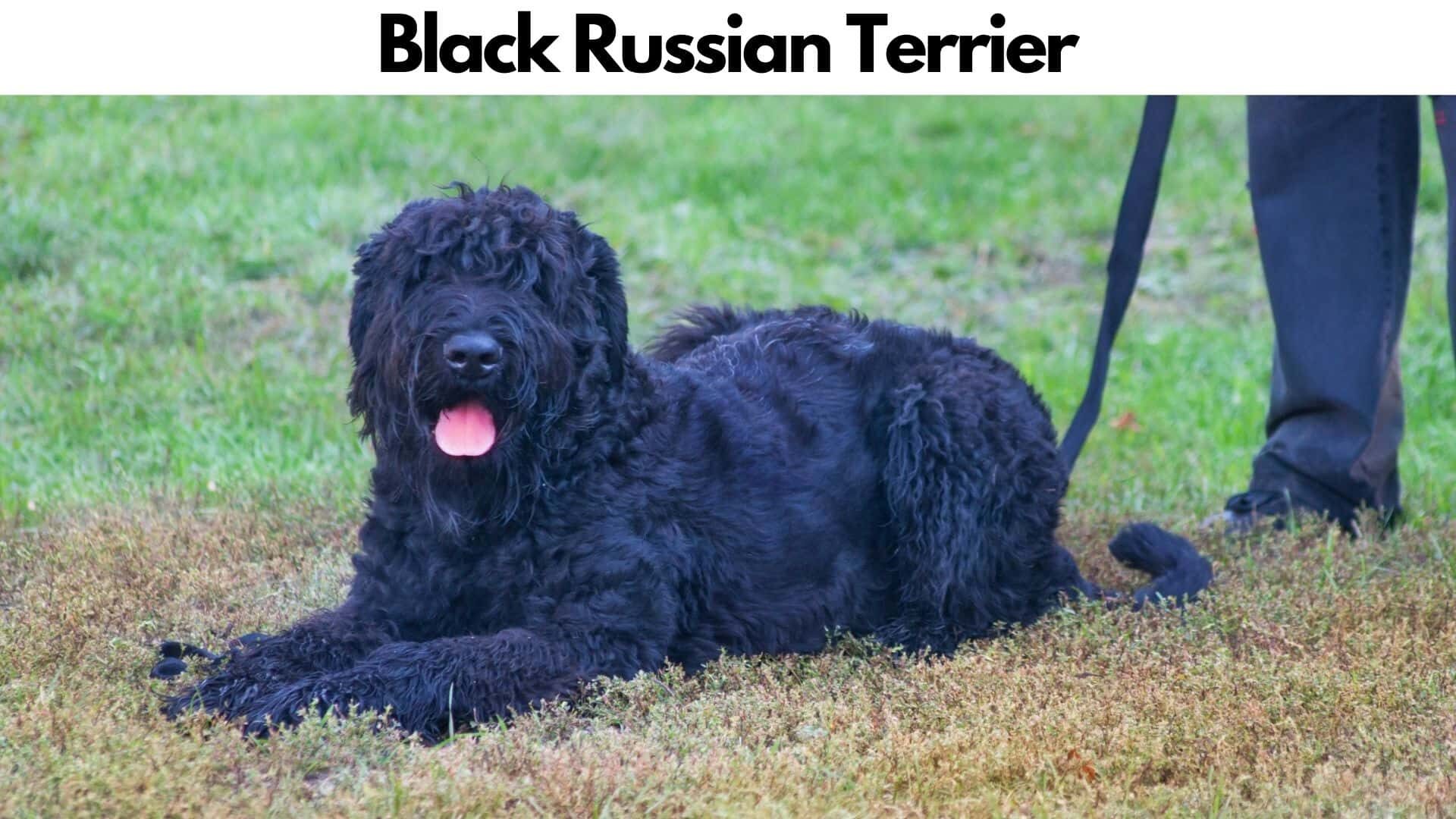
The shoulder height of this breed’s members is an average of 30 inches. For military purposes, they were first developed in the Soviet Union. A good choice gave the region’s often chilly climate.
Through careful breeding of huge schnauzers, rottweilers, and airedales, this breed was created. Between 130 and 140 pounds is the typical weight of an adult Black Russian Terrier. They have a high level of intelligence and are quite adaptable. Has a great time working as a service dog. Intensely protective of loved ones and distant to outsiders.
12. Leonberger
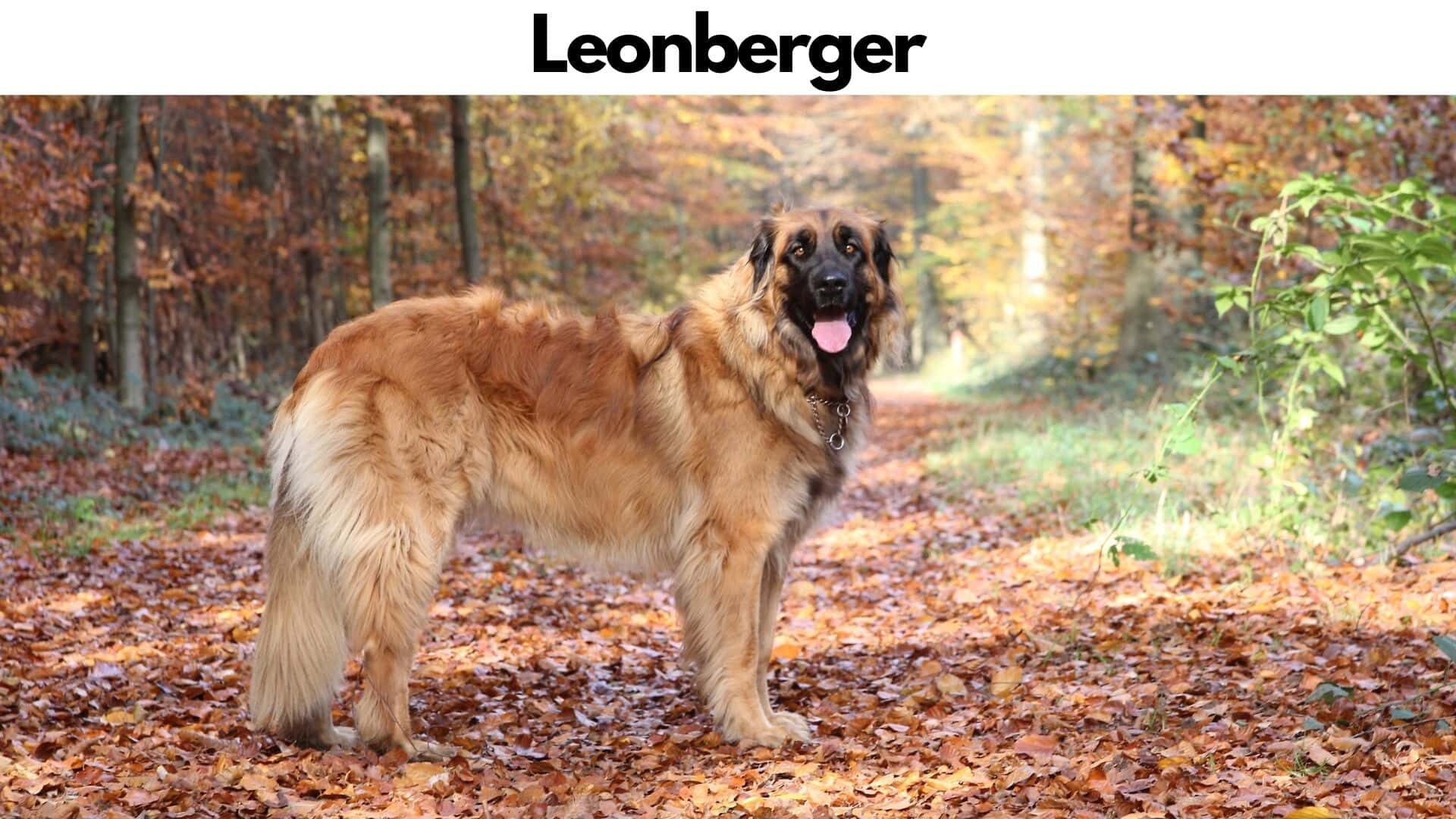
The height of a Leonberger ranges from 27 to 31 inches. Newfoundland, Great Pyrenees, and Saint Bernard are all mixed into one dog. Leonberg, Germany, is where it was born. A mature dog may reach a weight of 170 pounds. This dog is very bright, clever, and quick to pick up new skills.
This breed is self-assured and nimble in its approach. They have a mellow demeanor, making them ideal for families with children. In appearance, a German Shepherd, but larger, stronger, and with a more robust build than the typical German Shepherd possesses. German Shepherd black and tan breeds share the same coloring as Leonbergers.
13. Irish Wolfhound
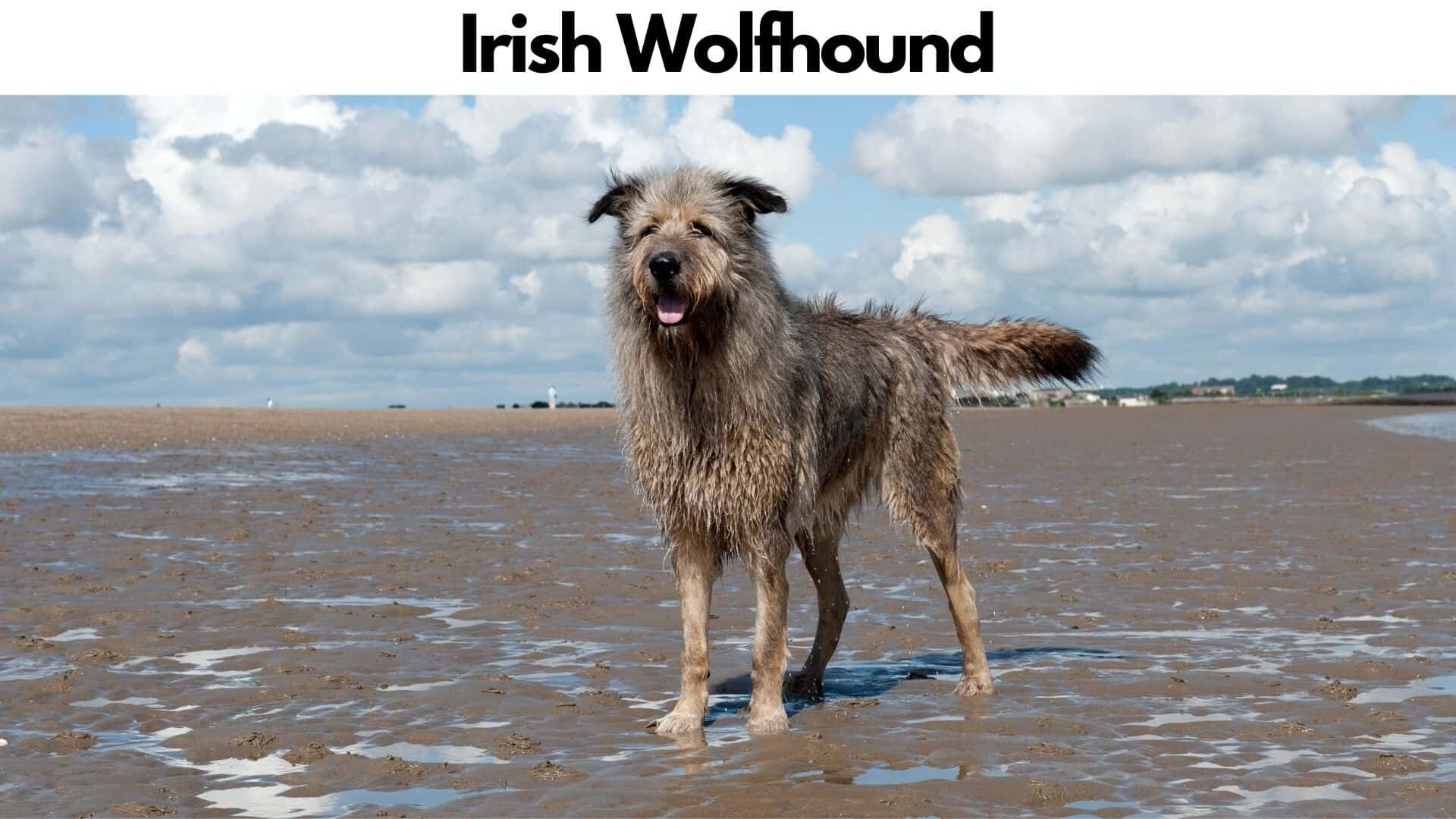
Male Irish wolfhounds are 32 to 35 inches tall, while females grow to 30 inches tall. These dogs have their origins in Ireland, where they may be traced all the way back to the year 7000 BC. Their major function was to hunt.
They may grow to a weight of up to 140 lbs. They have a low-key demeanor and like to keep to themselves. Sleek and powerful, the Irish Wolfhound’s physique is shaggy. There is a chance they are taller than a miniature pony. Smaller heads and narrower muzzles resemble Airedales, but with a somewhat different facial structure.
14. Scottish Deerhound
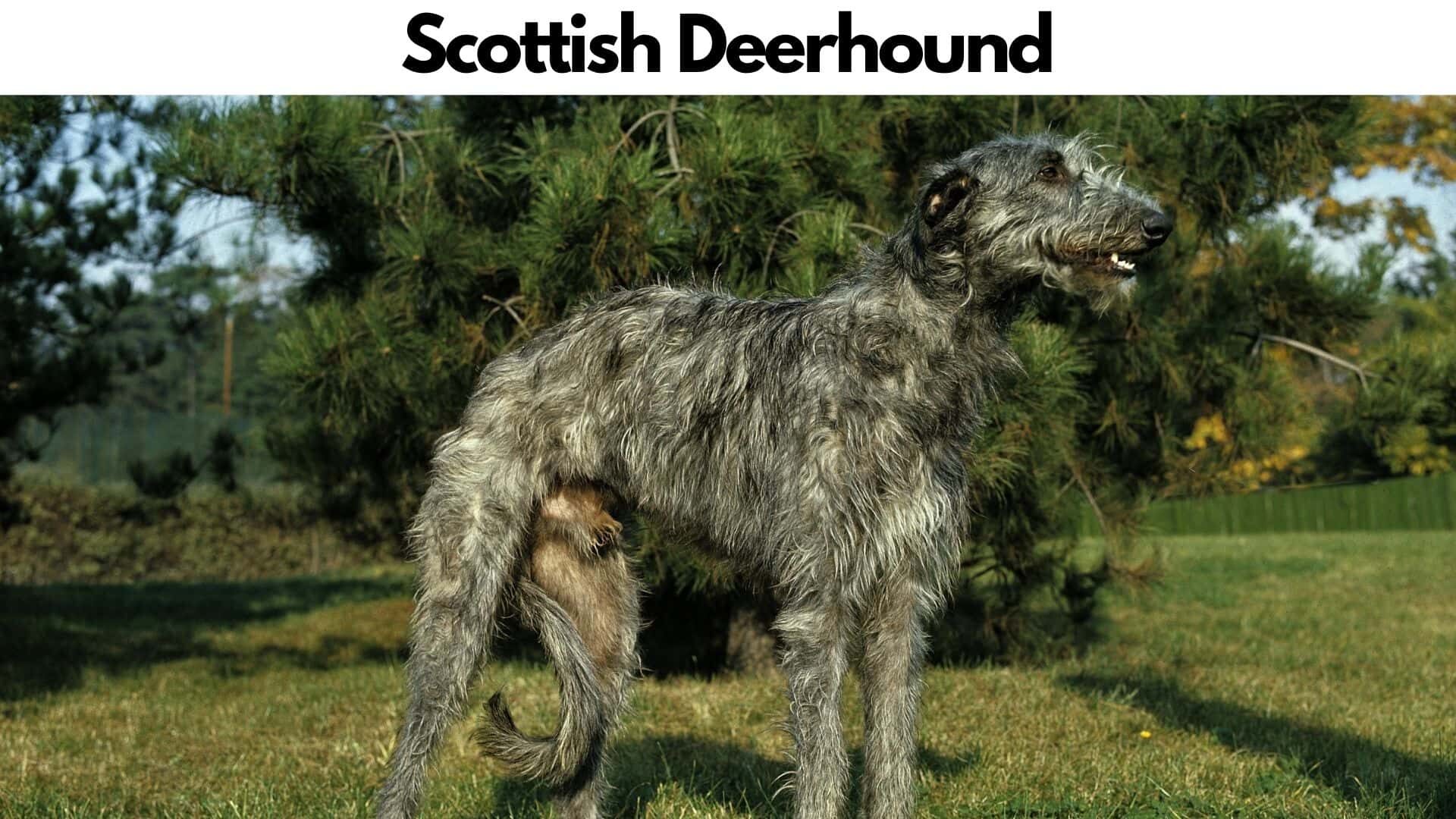
When fully mature, this breed may stand up to 32 inches tall. It was first bred in Scotland as a courser for deer hunting. An adult Scottish Deerhound weighs an average of 110 lbs.
When they’re young, they’re feisty and in need of physical activity. They have a refined demeanor, are empathetic, and are quick learners. Despite having a similar head shape to a greyhound, Scottish Deerhounds have a slimmer frame that allows them to go after prey with greater speed.
15. Saint Bernard
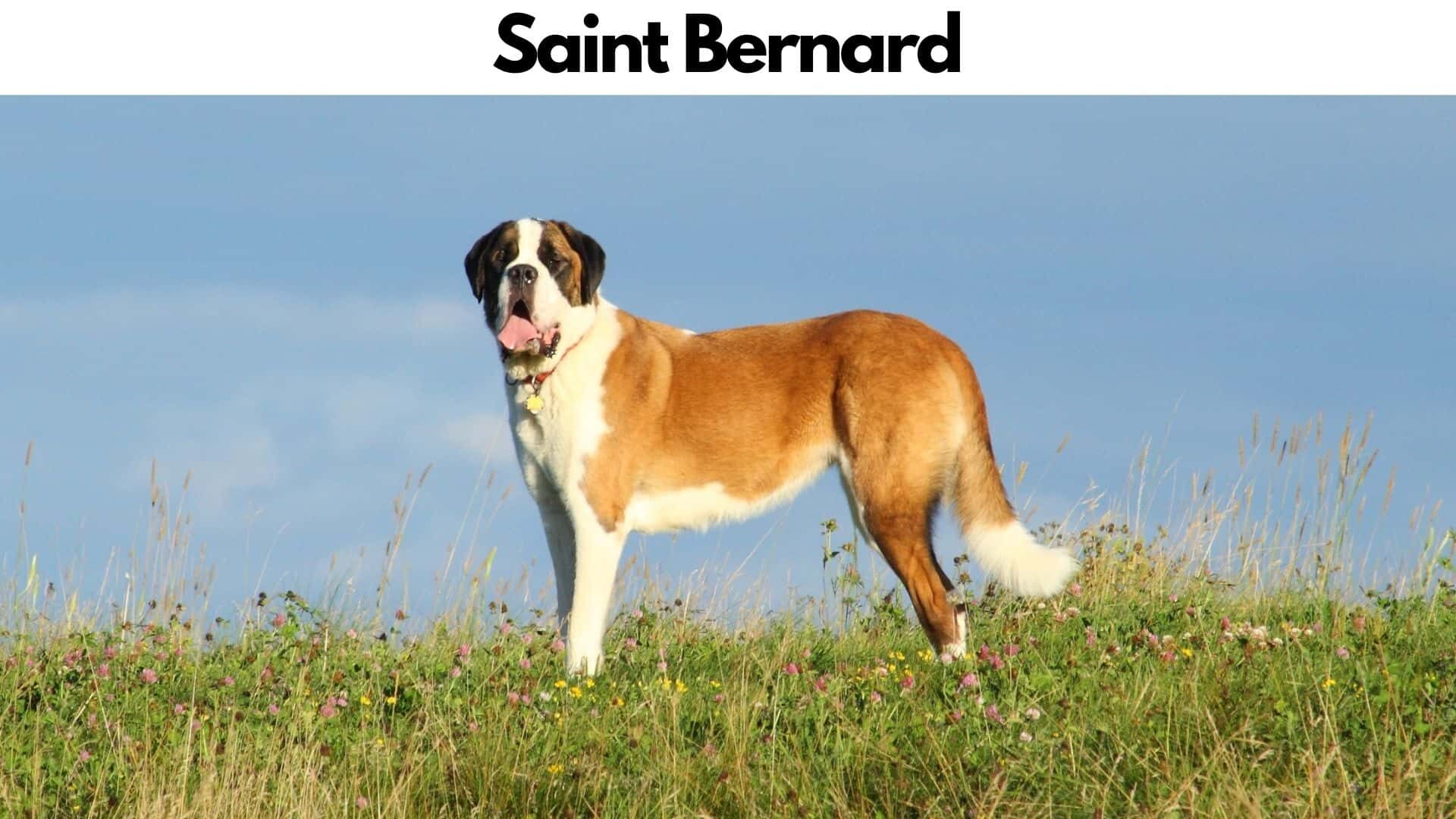
It is possible for the Saint Bernard breed to grow up to 30 inches tall at maturity. Swiss rescuers began breeding Saint Bernards in the 1800s. Between 140 to 180 pounds, the average adult weight.
Despite their size, they are kind, kind, and nurturing. Friendship and excellent relations with youngsters are a natural part of their character. It has a thick coat of tri-colored white, tan, and sometimes lighter black patterns, and is huge in the center.
16. Old English Sheepdog
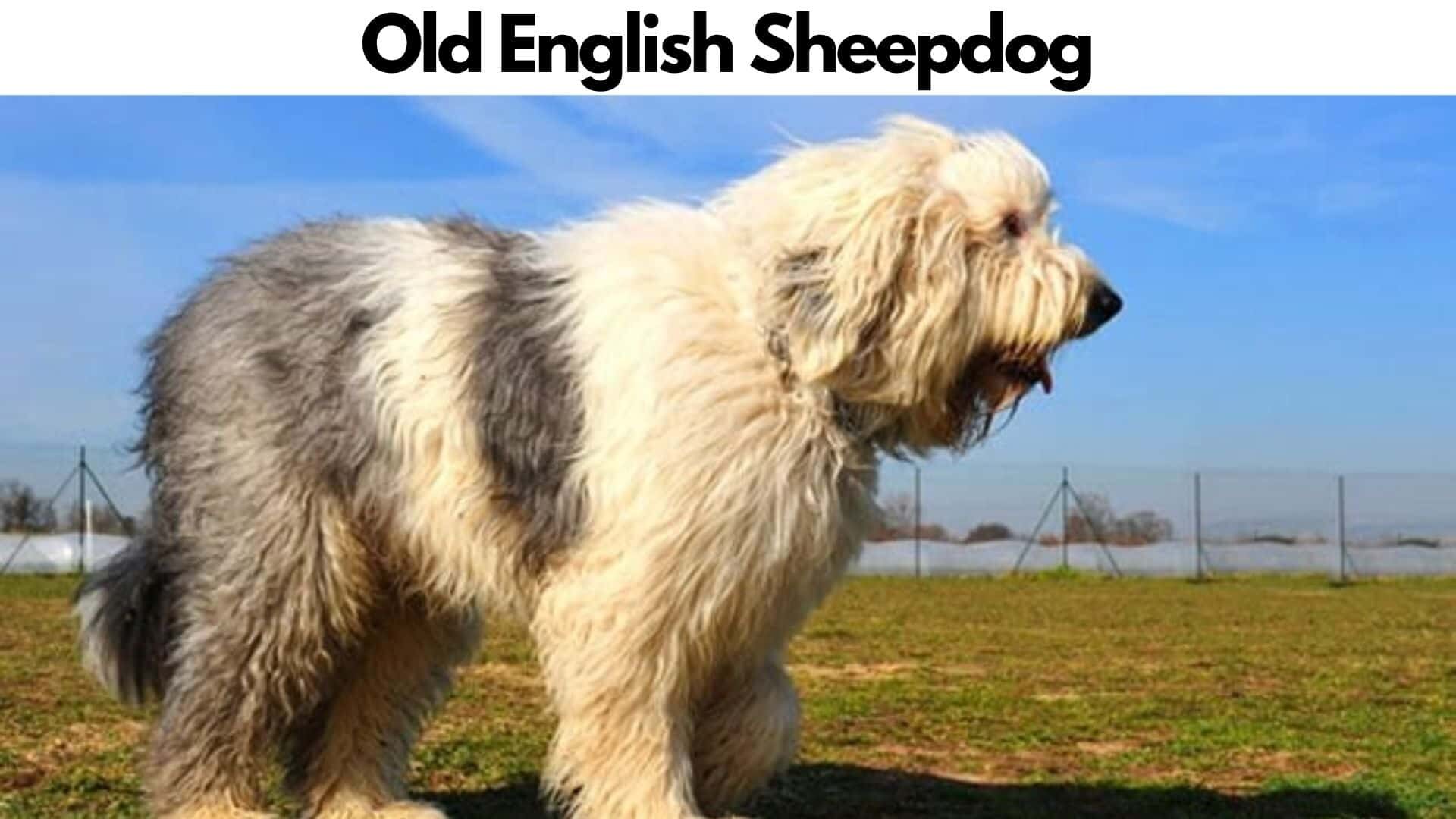
Females reach a shoulder height of 20-22 inches at full maturity. Males measure between 22 and 24 inches in length. As a drover dog for cattle and sheep during the roundup in England, they were first bred.
A fully mature man weighs 70-100 pounds, whereas a fully grown girl weighs 60 to 80 pounds. They’re smart, versatile, friendly, and fast to learn. These are two huge dogs who have long, unkempt hair on their bodies. A white foundation and a second coloration are the most common markings on these birds, which may also be gray or brown.
17. Chow Chow
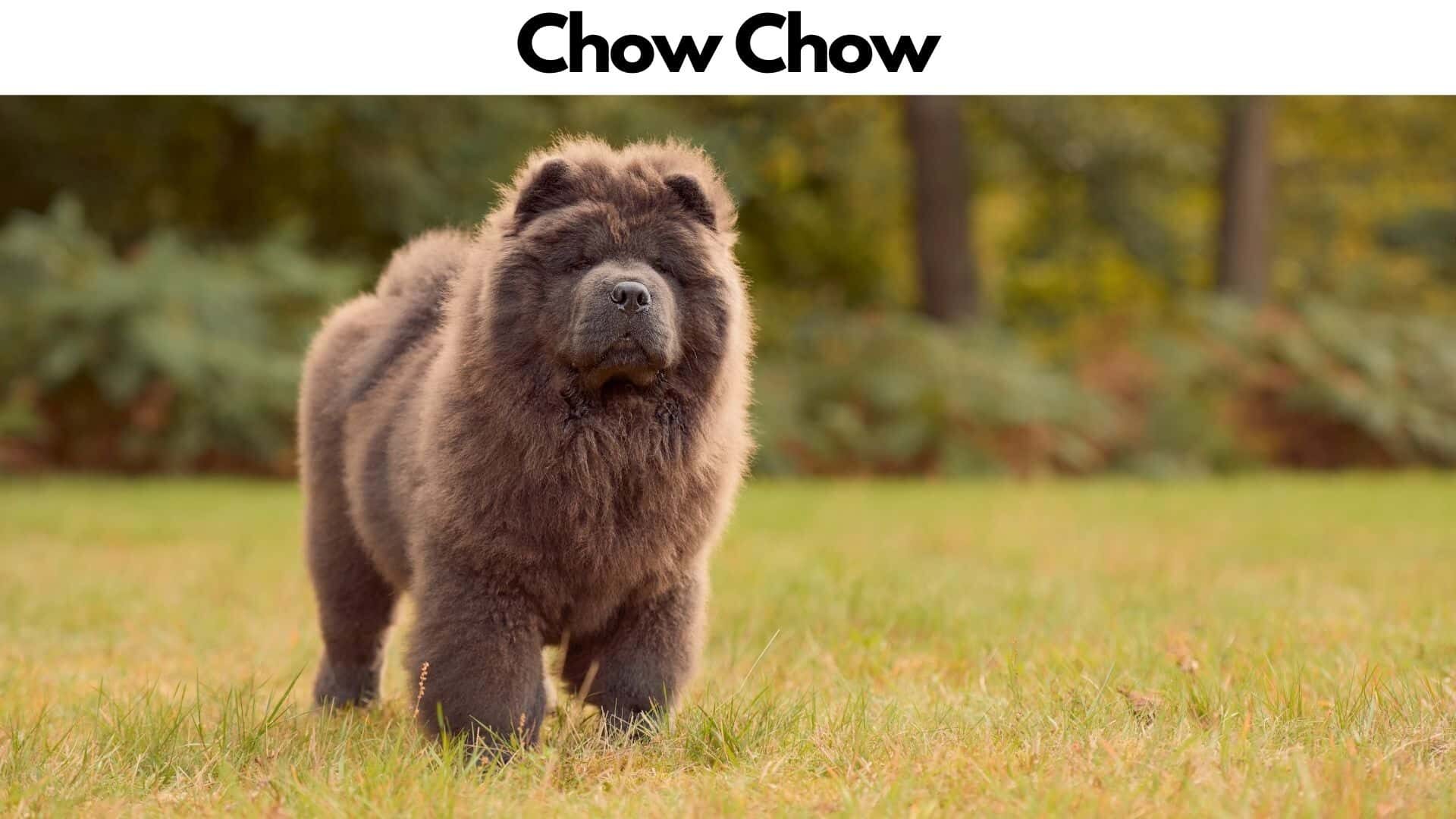
This dog has a shoulder height of 15 to 20 inches. These canines were originally developed to defend the royal palaces of China’s northern regions. Chows may weigh anywhere from 40 to 70 pounds as adults. Chows, despite their appearance, are not aggressive.
Graceful and self-confident but committed to their families, they are a perfect balance. Abuse will not be tolerated by them, although they are aloof and faithful to their family members.
Chows have a regal look. Guard hairs stretch upward from their thick, fluffy covering. Their wit is a little choppy and stilted, and they’re not very quick. The stiff gait is a result of the back legs being virtually straight.
18. Chinook

When completely mature, the Chinook reaches a height of 21 to 27 inches at the shoulder. The White Mountain area of New Hampshire was the birthplace of this breed. It was specifically designed to be an agile dog for sports, sled-pulling, or other activities that need agility. Adults typically weigh 55 to 70 pounds. This dog has a mellow demeanor.
It’s a strong and intelligent dog that’s great for families. A decent watchdog, but not one that will attack you. It has a wide range of abilities, including being adaptable, affectionate, and athletic. An very uncommon breed, the Chinook is a huge dog.
Floppy or prick ear kinds are available, as is a head in proportion to its body. However, this breed sheds enormously twice a year. Between the large sheds, there is moderate shedding to contend with. The coat has a tan and white tawny hue.
19. Kuvasz
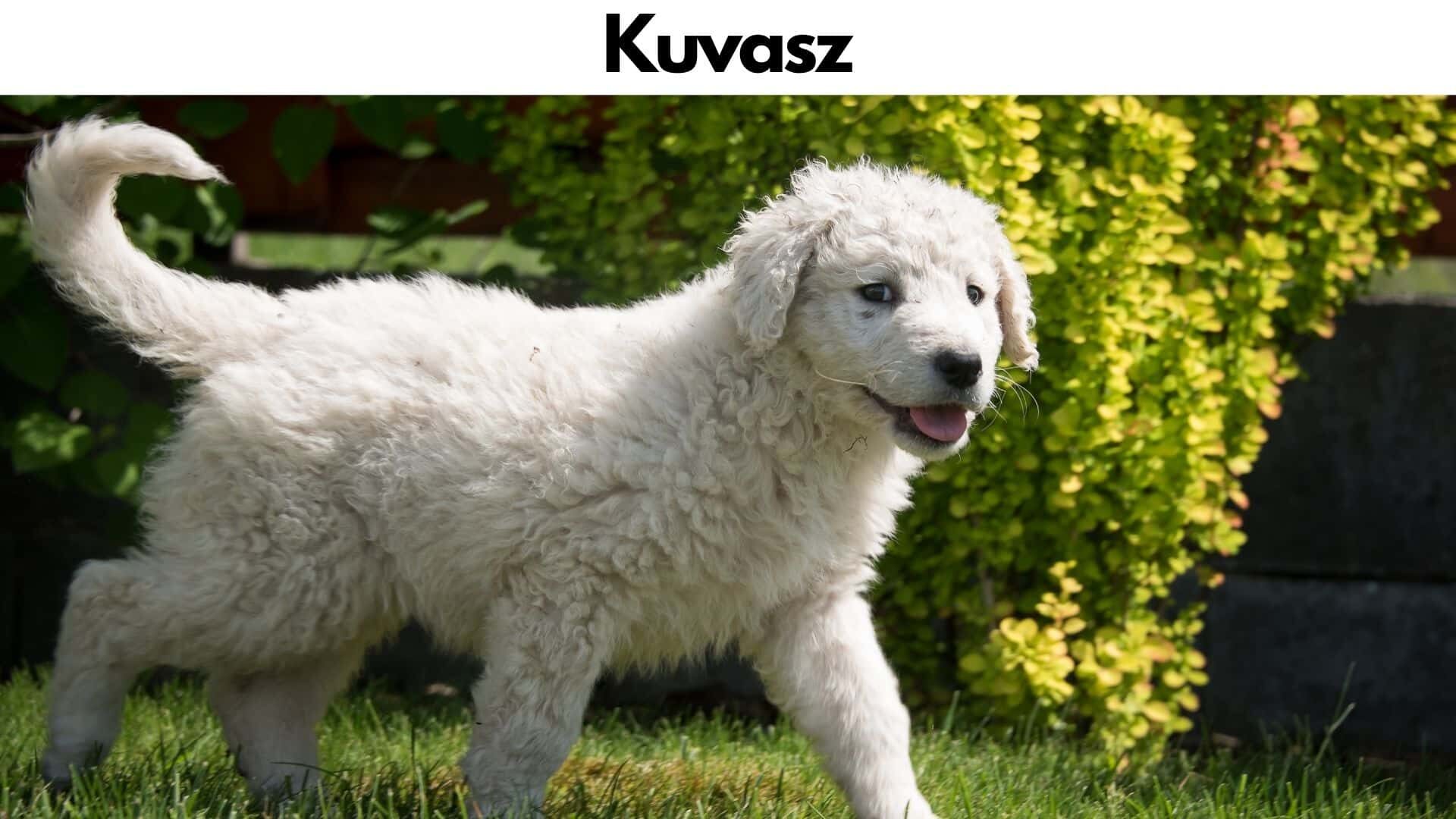
The Kuvasz reaches an adult height of 26 to 32 inches at the shoulder. Hungarian ancestors were responsible for the development of this breed. A working dog by nature, he has recently developed a following as a show dog. Kuvasz adults typically weigh between 70 and 115 pounds, with some surpassing that weight limit in the upper end.
When it comes to personality, this dog is everything from simple. However, the breed has a tendency to be too empathetic. This is a family dog that is wary of outsiders and fiercely protective of those in his care. Kuvasz resembles a white wolf in look. The fur is thick and dark, which contrasts sharply with the white color of the body and the almond-shaped eyes. They have well-developed muscles and a powerful frame, yet they are also graceful and attractive in appearance.
20. Komondor
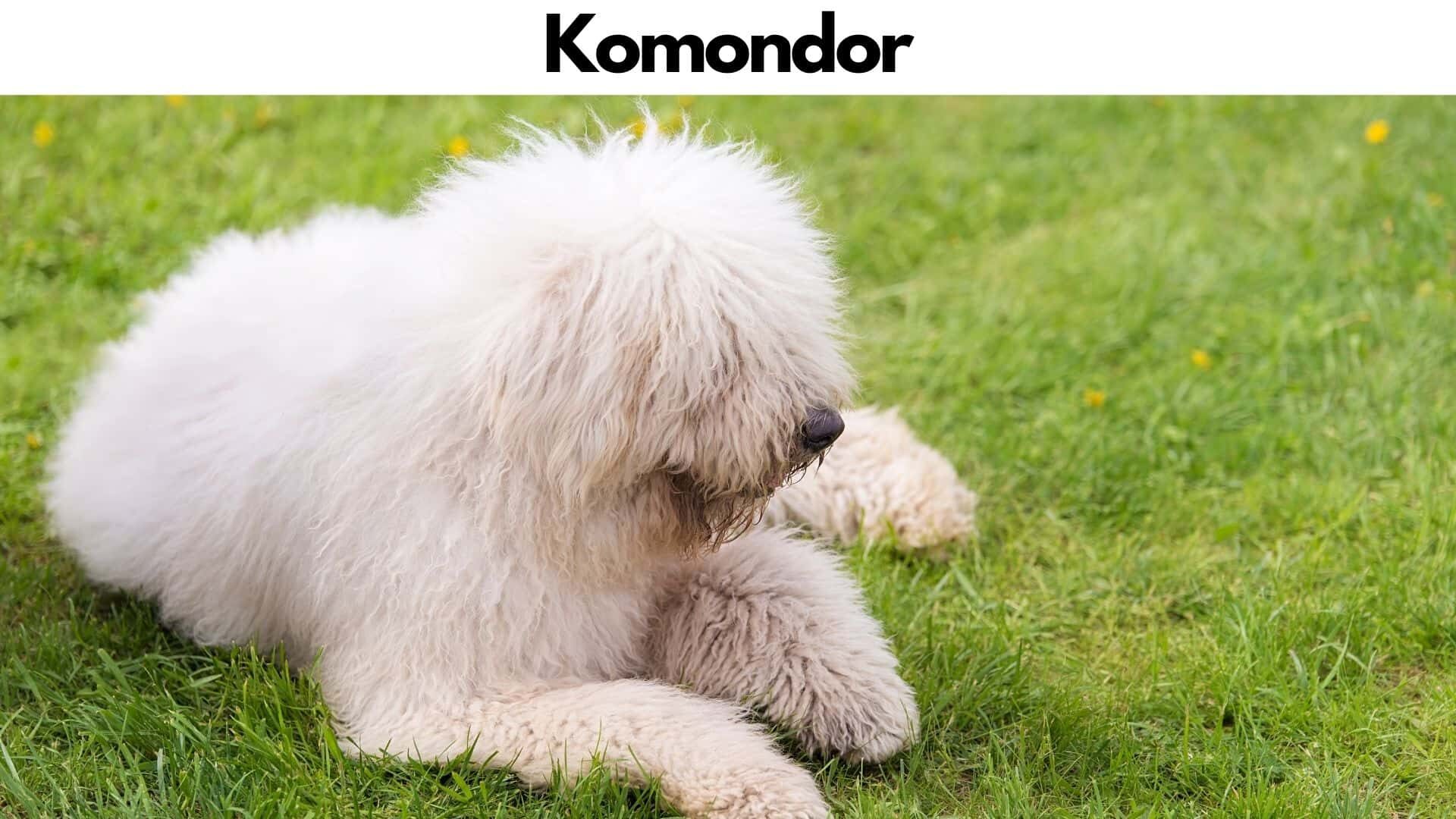
The shoulder height of an ault Komondor is between 25 and 27 inches. These dogs have their ancestry in Hungary. To begin with, they were developed to protect the flocks. Between 80 and 100 pounds, a fully developed Komondor is considered a large dog. The Komondor is a fierce defender who takes great pleasure in keeping an eye on both humans and animals.
If you begin training him when he is still a puppy, he will learn quickly and easily. He is a lone wolf who is naturally wary of outsiders. Unless you establish who’s in charge at a young age, this dog is likely to reject authority. In the event that he considers a person as a danger, he may attack them.
A dog of this kind would devote his life to defend the people he cares about. White dust mops are what Komondors look like. Hands and feet are covered in thick, braided fur.
Watch world biggest dog | Video
What is the largest dog in the world?
The Great Dane is the tallest dog breed in the world, with a male reaching an average height of 30 inches (76 cm) at its shoulders.
How big is the largest dog in the world?
The Great Dane is also one of the heaviest dogs, weighing between 110 and 150 pounds (50-68 kg), although some individuals may exceed this weight by as much as 20%.
What dog has the biggest dog?
While there are smaller breeds that weigh more than 100 pounds when fully grown, these dogs tend to be closer to 30 inches tall at their shoulders (a size that is closer to that of a wolf than any domesticated animal). The largest breeds are usually around half that size at maturity.
Is Zeus still alive?
Zeus was euthanized in March 2018 after being diagnosed with cancer earlier in 2017. He was 12 years old at the time of his passing and weighed 155 pounds (70 kg). His owner said he was “the sweetest most gentle giant I have ever known” and that “he touched so many lives & will continue to do so through his offspring.”
What is the largest-sized dog?
Great Danes are typically between 28 and 30 inches tall. The American Kennel Club typically recognizes the Great Dane as the tallest dog breed. 1 As a German mastiff-breed dog, the Great Dane is known as a Deutsche Dogge (German mastiff dog) in Germany.
Conclusion
There are many dogs that are really outstanding, but if you want to stand out from others, you should take a look at the list that we have prepared for you here. These ten dogs really deserve their place in the center of attention, and not just because of their size.
They are nothing like your everyday street mutt, and it’s impossible for a dog lover not to admire them. Let’s check the details about the largest breeds in this world. In this list, we have included large wolf-like dogs and massive gentle giants. They are all loved by their owners, and they deserve it!
Bottom up
Please comment below about your ideas and share this “20 Largest Dogs in the World : Guide with Pictures 2022” article with your friends.
Stay tuned with our website to find out more exciting stuff. Don’t forget to check out our previous articles too.
Until the, Read about, Dog Hits Me When I Stop Petting Her: 10 Things to Do Guide






